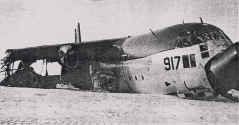-
- Lockheed LC-130R
-
- Lockheed production number: 4305
- Lockheed series number: 382C-9D
- Type/Model/Series LC-130R
- US Navy Buno: 155917
- Build date: 1968
- VX-6 side number: JD-17
- History: Operated with VX-6 / VXE-6 from 1968 to 1973. This was a "one only"
Navy LC-130R buy from Lockheed.
- Disposition: Crashed on landing at the South Pole Station 28 Jan
73. It is located about a quarter mile off of the the approach end of the South Pole
runway, used as a guidence marker.
|
-
|
-
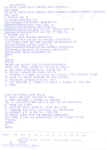 - From Billy-Ace
- Message on the final voyage of XD-917
|
-
|
-
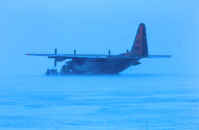 - Photo by Don Leger
|
-
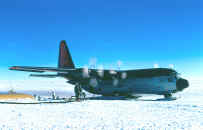 - Photo by Don Leger
|
-
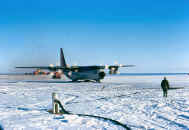 - Photo by Don Leger
|
-
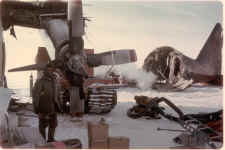 - Photo from Billy Ace
|
-
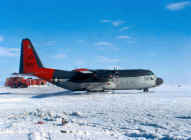 - Photo by Don Leger
|
-
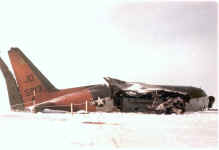 - Photo from Billy Ace
|
-
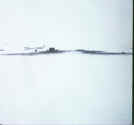 - Photo by Mike Draper
|
-
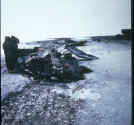 - Photo by Mike Draper
|
-
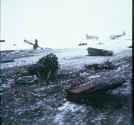 - Photo by Mike Draper
|
-
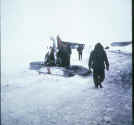 - Photo by Mike Draper
|
-
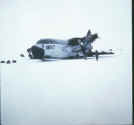 - Photo by Mike Draper
|
-
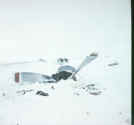 - Photo by Mike Draper
|
-
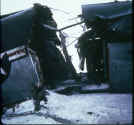 - Photo by Mike Draper
|
-
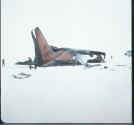 - Photo by Mike Draper
|
-
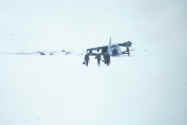 - Photo by Mike Draper
|
-
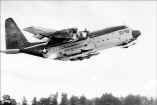 -
|
-
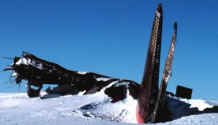 - Photo from Joel Michalski
|
-
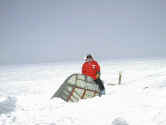 - Photo from Joel Michalski
|
-
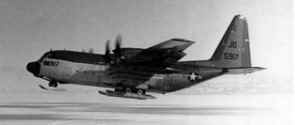 - Photo from Bob Nyden
|
-
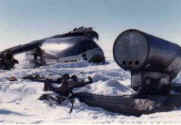 - Photo from Bob Nyden
|
-
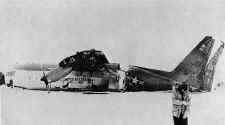 - Photo from Bob Nyden
- I found this picture in the squadron's
- 25th anniversary/1975 cruise book
|
-
- photo from Bob Nyden
|
-
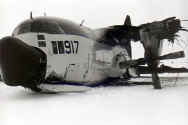
|
-
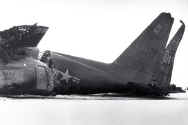
|
-
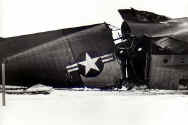
|
-
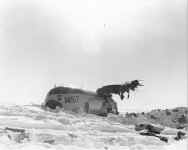
|
-
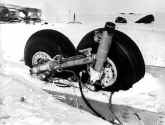
|
-
- Date: Thu, 30 Mar 2000
From: Bob Nyden Frumenty@ispchannel.com
I was "there" for the 71/72, 72/73, and 73/74 seasons. The 917 crash site pretty
well covered the length of the skiway at pole and it was quite a mess for the rest of the
year after the accident, but because the loss put us down to only two Hercs (319 and 320),
air ops were severely curtailed. For SAR purposes, both planes had to be mechanically up
for either to fly, and by that time of year most of the flights were turnarounds to ChCh.
By the time we got back the next year (73), there was no trace of the wreck. The w/o crew
had apparently dragged it all off and repaired the skiway. I was told then that the thing
was buried, and I think another navigator gave me the subject picture to prove that it
wasn't. At any rate, it wasn't obvious from the skiway or the parking area in front of the
dome loading area. It may be that they truly buried it all before the
press all showed up for the dedication in 75.
Bob N.
Date: Fri, 14 Apr 2000 20:39:54 -0700
To: spindle@attglobal.net
From: Bob Nyden Frumenty@ispchannel.com
Subject: 917 crash aftermath
Bill and Joe:
Here are the pictures I have of 917 after it crashed at Pole. These were taken the day
after the accident by a fellow navigator named Mike Draper, who was on the first
investigation/rescue flight out from McMurdo. As you can see, it was a day of heavy
overcast, and he used a cheap point-and-shoot camera. Still, some of these shots are
pretty dramatic, and with a little color/exposure correction they can be made to look
okay.
The story of the crash that went around at the time was that a thin layer of ice fog was
reported a few hundred feet over the station.
The plane was making a GCA approach, but the ice fog was thin enough that from above you
could see right through it. As the controller handed over landing to the pilot Major
Allen (Correction by Patrick Yoas) (Maj George MacGlaughlin (sp?)),
the copilot said he had the skiway visually. Major Allen (Maj Mac)
looked up and saw nothing but fog. By the time he reacted (i.e., added power and rotated
up to go around), he was too low and bashed the tail on the snow right at the ramp. The
plane slammed down, wingtips and props hit the snow and came off. In some of the pix you
can see that it looks as if the plane sort of walked out of its shoes. The impact
cracked open the fuselage at the paratroop doors, and the 500 gallon MOGAS bladder that
was strapped to the ramp came loose, fell out, and was ignited by flames streaming from
the broken wing tanks. It burned a hole way down into the snow and was still steaming
hours later. The crew did everything right after landing: even though everyone piled out
through every available orifice without delay (!), it was reported that all the power and
and engine controls were off or safe as specified--although there wasn't much left to shut
down.
The only thing still on when the cockpit was checked later was the Inertial Nav System,
which was still trying to run on its battery.
Bob N
-
- The last moments of 917....
- New info added to Dave Riley's VX-6 webpage on 917.
-
- Cool Chick's webpage
-
- Bill Spindler's webpage on 155917
-
- Antarctic Website
|
|






















